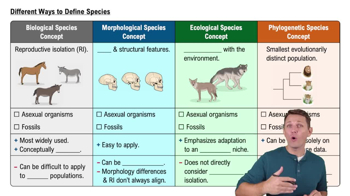Multiple Choice
Indeterminate cleavage produces embryonic cells that __________.
943
views
 Verified step by step guidance
Verified step by step guidance Verified video answer for a similar problem:
Verified video answer for a similar problem:



 5:58m
5:58mMaster Overview of Animals - 1 with a bite sized video explanation from Jason
Start learning